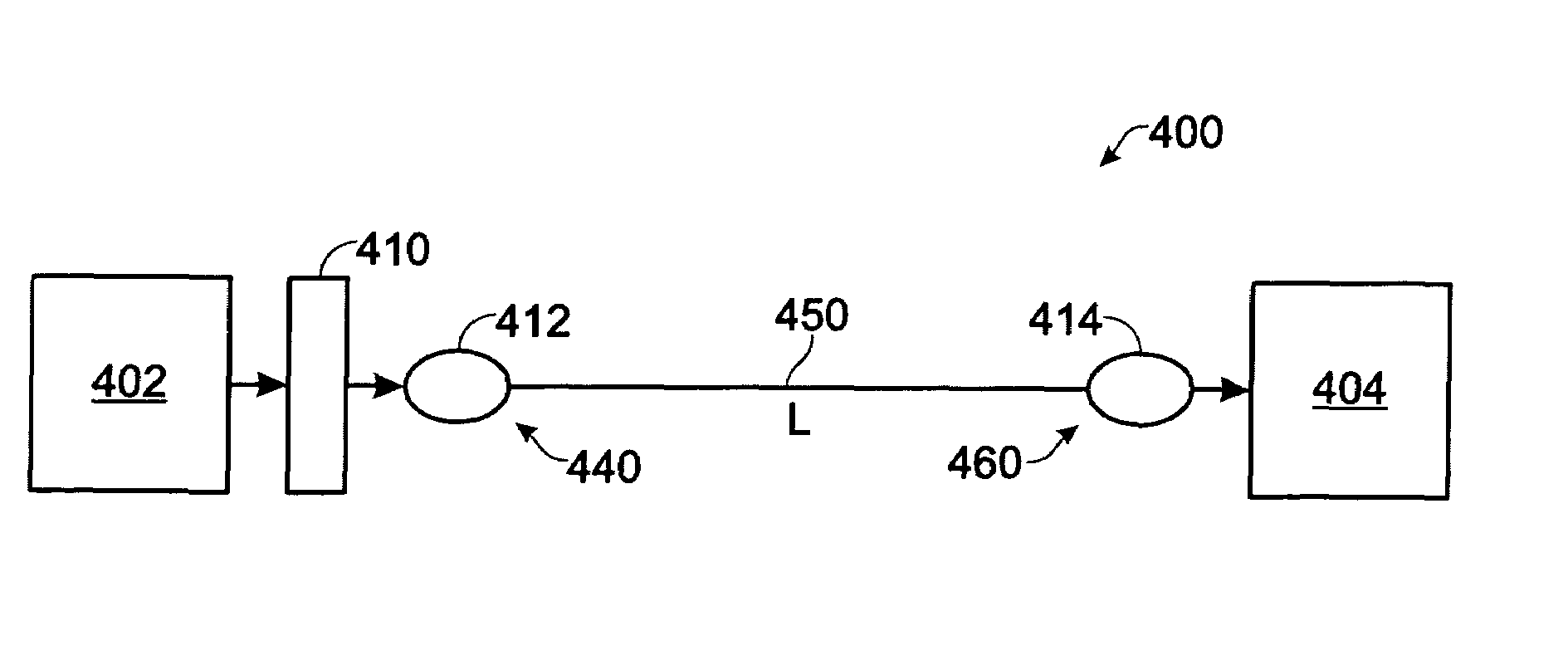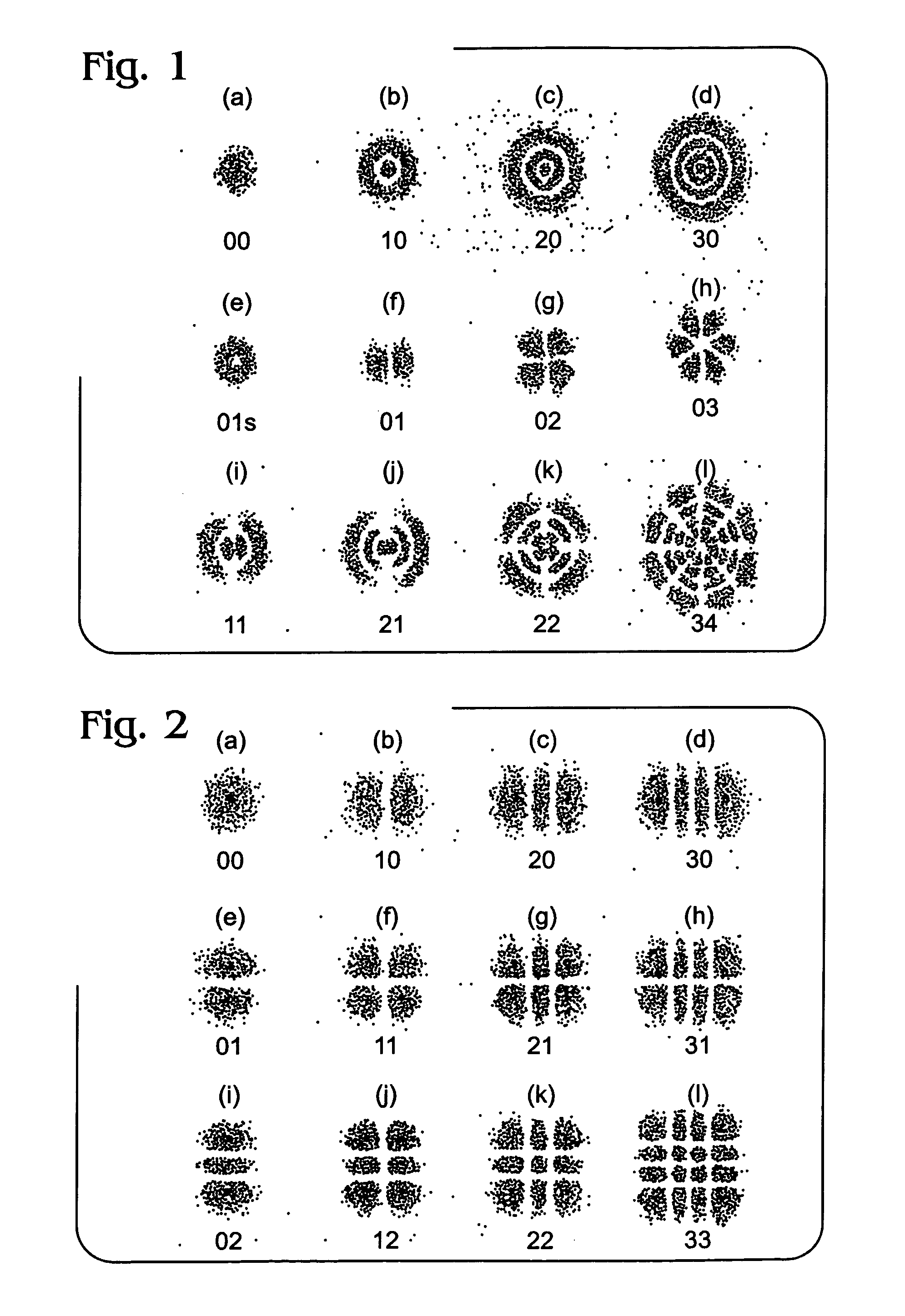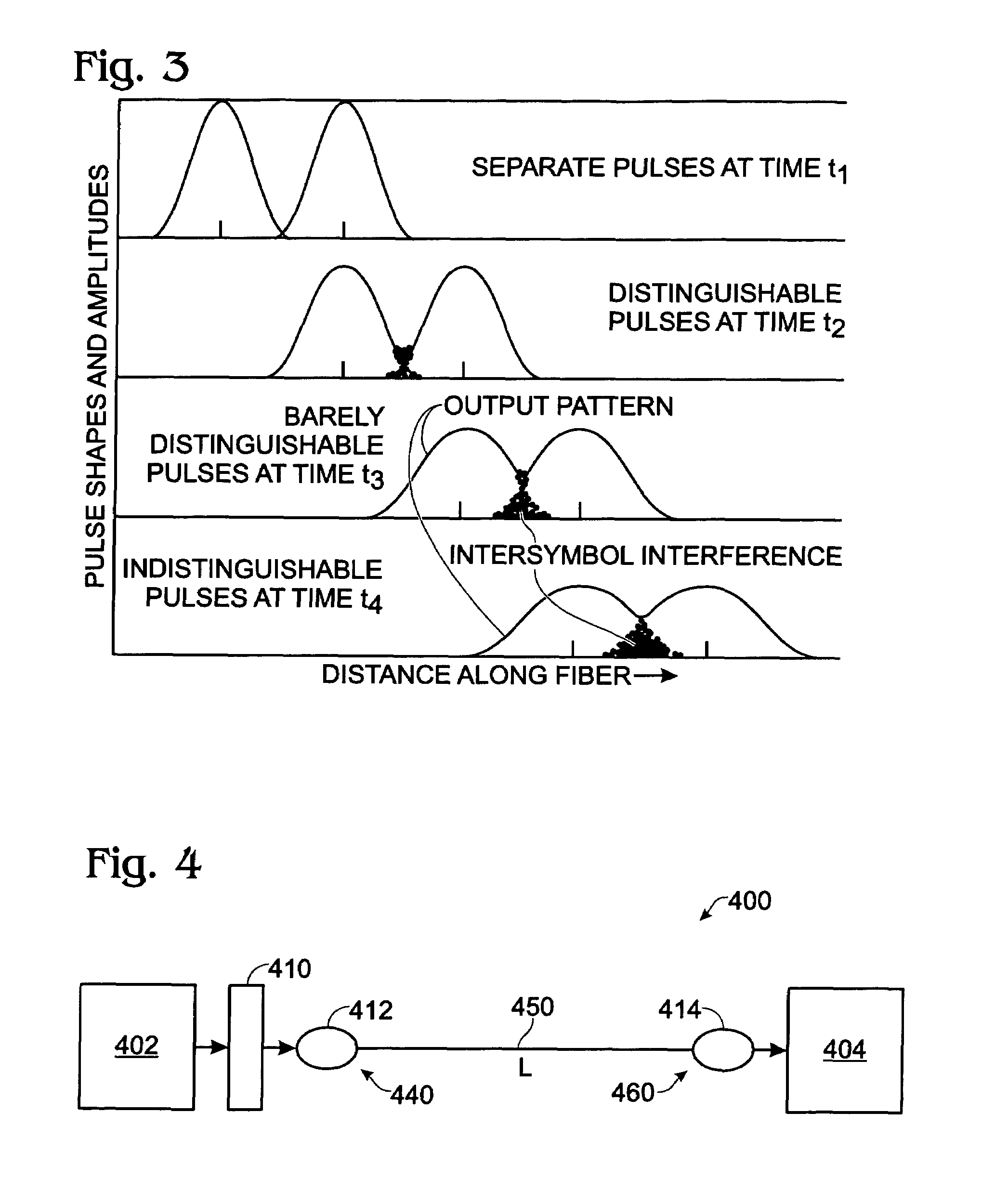Method and apparatus for mitigation of modal dispersion effects in multimode fiber
a multi-mode fiber and modal dispersion technology, applied in the field of fiber optic communication, can solve the problems the principal limitation factor of intersymbol interference caused by modal dispersion, and the cost of reducing the resulting degradation of the bit rate-distance product due to isi, so as to reduce the effect of intersymbol interference, the effect of modal dispersion
- Summary
- Abstract
- Description
- Claims
- Application Information
AI Technical Summary
Benefits of technology
Problems solved by technology
Method used
Image
Examples
Embodiment Construction
[0020]A method for mitigating modal dispersion of an optical signal in a multimode optical fiber transmission medium involves the steps of providing an optical signal, transforming the optical signal into a form characterized as a Bessel beam, launching the Bessel beam signal into an input end of a multimode optical fiber transmission medium, outputting the optical signal at an output end of the multimode optical fiber transmission medium and receiving the output signal at a receiving station of the transmission system. The diffractionless nature of Bessel beam propagation allows the launch or excitation of signal transmission modes in the multi-mode optical fiber that are less prone to temporal spreading, known in the art as modal dispersion, which results in intersymbol interference at a detector or receiver in the system, and which limits the bit rate-distance product capacity of the system. Embodiments of the invention are applicable to all common fiber optical communication tra...
PUM
 Login to View More
Login to View More Abstract
Description
Claims
Application Information
 Login to View More
Login to View More - R&D
- Intellectual Property
- Life Sciences
- Materials
- Tech Scout
- Unparalleled Data Quality
- Higher Quality Content
- 60% Fewer Hallucinations
Browse by: Latest US Patents, China's latest patents, Technical Efficacy Thesaurus, Application Domain, Technology Topic, Popular Technical Reports.
© 2025 PatSnap. All rights reserved.Legal|Privacy policy|Modern Slavery Act Transparency Statement|Sitemap|About US| Contact US: help@patsnap.com



